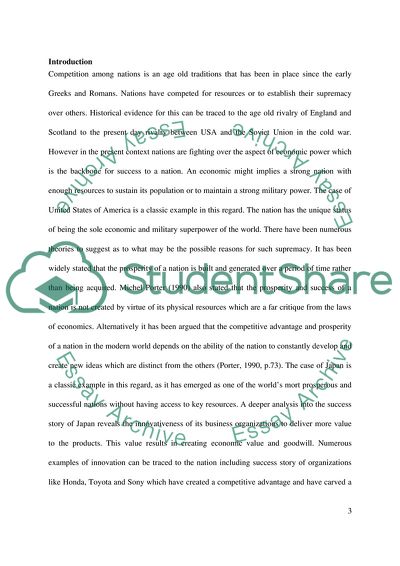Cite this document
(The Competitiveness of the Nation on the Basis of the Diamond Model Term Paper, n.d.)
The Competitiveness of the Nation on the Basis of the Diamond Model Term Paper. https://studentshare.org/macro-microeconomics/1749380-evaluate-porters-concept-of-the-diamond-as-a-tool-for-analysing-the-competitive-advantage-of-nations-assessing-its-theoretical-coherence-and-empirical-support
The Competitiveness of the Nation on the Basis of the Diamond Model Term Paper. https://studentshare.org/macro-microeconomics/1749380-evaluate-porters-concept-of-the-diamond-as-a-tool-for-analysing-the-competitive-advantage-of-nations-assessing-its-theoretical-coherence-and-empirical-support
(The Competitiveness of the Nation on the Basis of the Diamond Model Term Paper)
The Competitiveness of the Nation on the Basis of the Diamond Model Term Paper. https://studentshare.org/macro-microeconomics/1749380-evaluate-porters-concept-of-the-diamond-as-a-tool-for-analysing-the-competitive-advantage-of-nations-assessing-its-theoretical-coherence-and-empirical-support.
The Competitiveness of the Nation on the Basis of the Diamond Model Term Paper. https://studentshare.org/macro-microeconomics/1749380-evaluate-porters-concept-of-the-diamond-as-a-tool-for-analysing-the-competitive-advantage-of-nations-assessing-its-theoretical-coherence-and-empirical-support.
“The Competitiveness of the Nation on the Basis of the Diamond Model Term Paper”. https://studentshare.org/macro-microeconomics/1749380-evaluate-porters-concept-of-the-diamond-as-a-tool-for-analysing-the-competitive-advantage-of-nations-assessing-its-theoretical-coherence-and-empirical-support.


